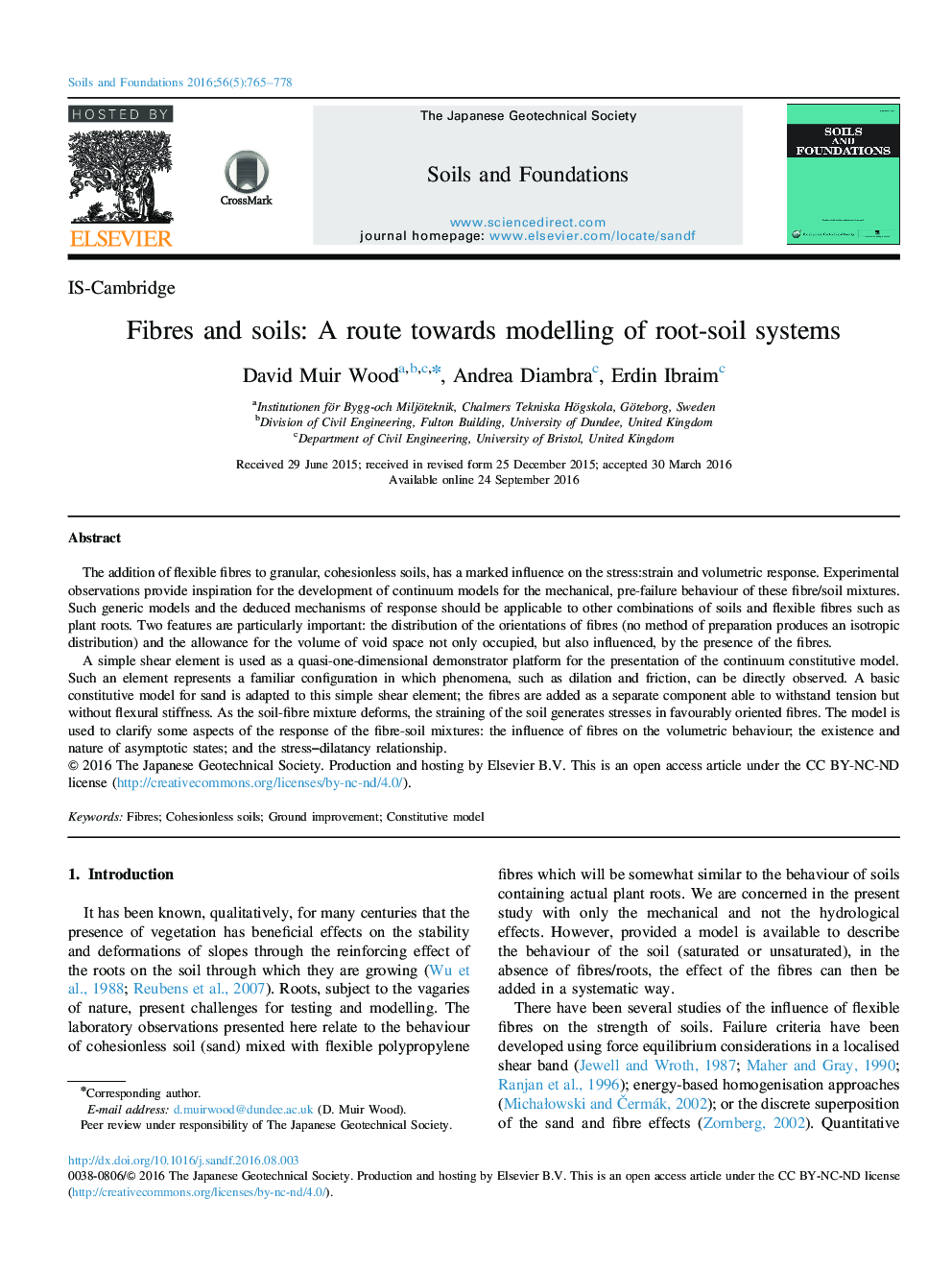| Article ID | Journal | Published Year | Pages | File Type |
|---|---|---|---|---|
| 4927666 | Soils and Foundations | 2016 | 14 Pages |
The addition of flexible fibres to granular, cohesionless soils, has a marked influence on the stress:strain and volumetric response. Experimental observations provide inspiration for the development of continuum models for the mechanical, pre-failure behaviour of these fibre/soil mixtures. Such generic models and the deduced mechanisms of response should be applicable to other combinations of soils and flexible fibres such as plant roots. Two features are particularly important: the distribution of the orientations of fibres (no method of preparation produces an isotropic distribution) and the allowance for the volume of void space not only occupied, but also influenced, by the presence of the fibres.A simple shear element is used as a quasi-one-dimensional demonstrator platform for the presentation of the continuum constitutive model. Such an element represents a familiar configuration in which phenomena, such as dilation and friction, can be directly observed. A basic constitutive model for sand is adapted to this simple shear element; the fibres are added as a separate component able to withstand tension but without flexural stiffness. As the soil-fibre mixture deforms, the straining of the soil generates stresses in favourably oriented fibres. The model is used to clarify some aspects of the response of the fibre-soil mixtures: the influence of fibres on the volumetric behaviour; the existence and nature of asymptotic states; and the stress-dilatancy relationship.
